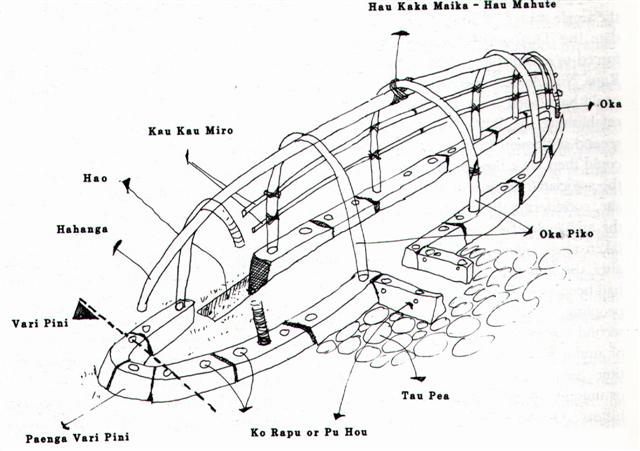|
Reva
To hang down; flag, banner. Revareva,
1. To be hanging vertically; to detach oneself from the
background of the landscape, such a person standing on
top of a hill: ku-revareva-á te tagata i ruga i te
maúga. 2. To cast itself, to project itself (of
shadows); revareva-á te kohu o te miro i te maeha o
te mahina, the shadow of the tree casts itself in
the light of the moon. 3. Uvula.
To hang, to suspend, flag, banner;
hakareva, to hang up; hakarereva, to hang up,
to balance; hakarevareva, to wave. T Pau.:
reva, a flag; fakarevareva, to hang up, to
suspend. Mgv.: reva, a flag, a signal. Mq.:
éva, to hang up, to be suspended, to wave a signal.
Ta.: reva, a flag, banner; revareva, to
wave. The germ sense is that of being suspended ... any
light object hung up in the island air under the steady
tradewind will flutter; therefore the specification
involved in the wave sense is no more than normal
observation.
Mgv.: 1. A plant. Ta.: reva,
id. Mq.: eva, id. Sa.: leva, id. Ma.:
rewa-rewa, id. 2. To cross, to pass across quickly;
revaga, departure. Ta.: reva, to go away,
to depart. Ma.: reva, to get under way. Ta.: The
firmanent, atmosphere. Ha.: lewa, the upper
regions of the air, atmosphere, the visible heavens. |
